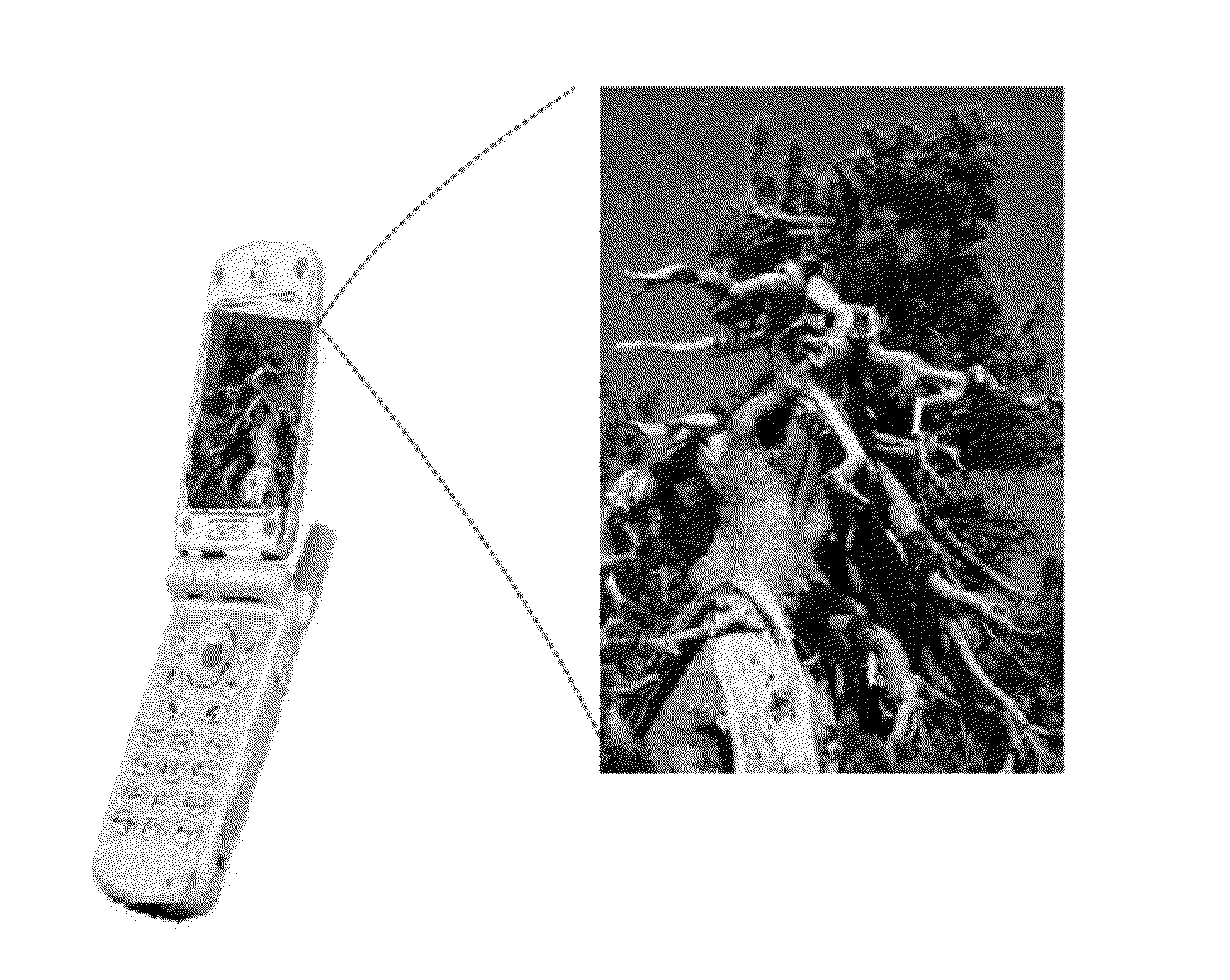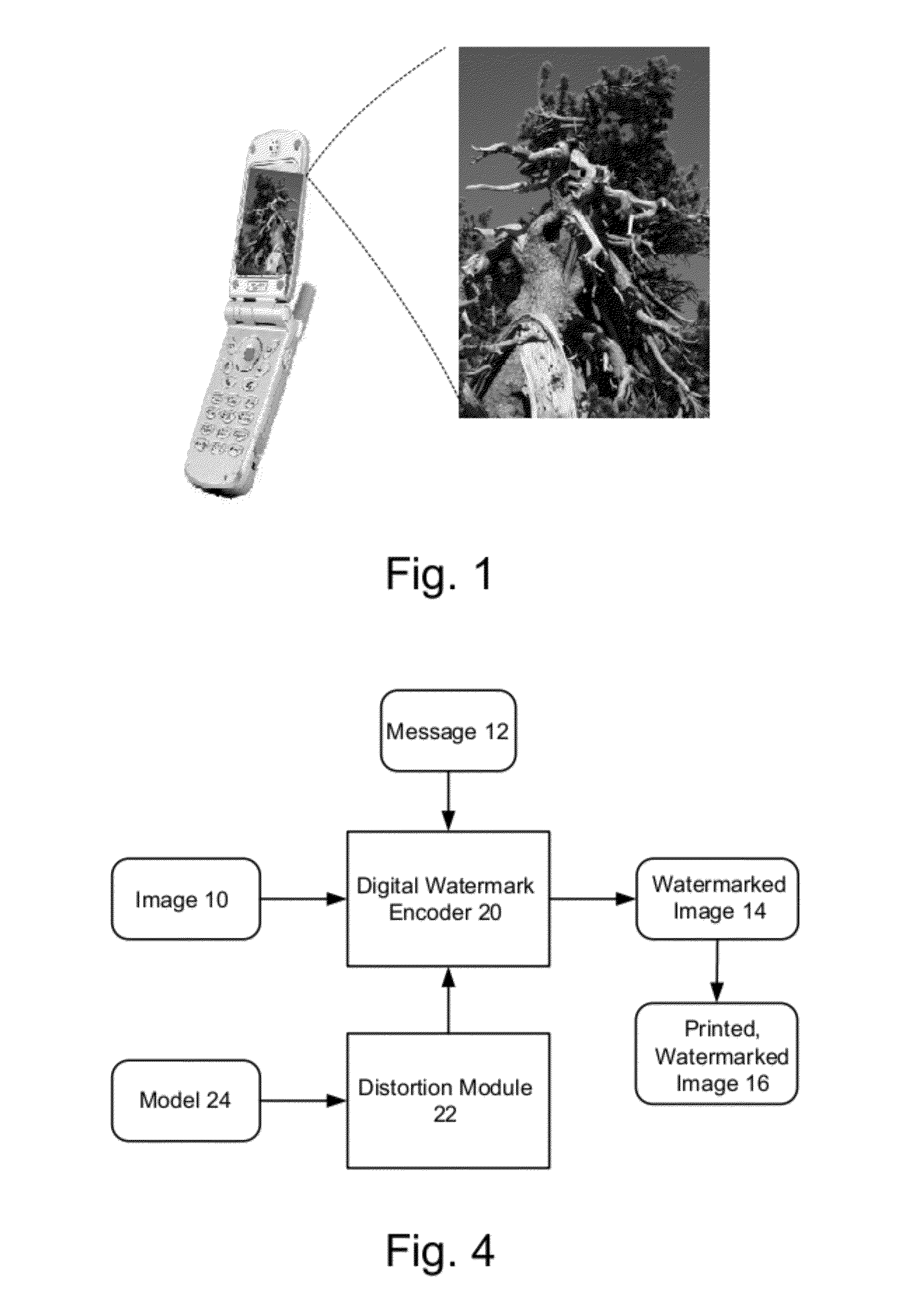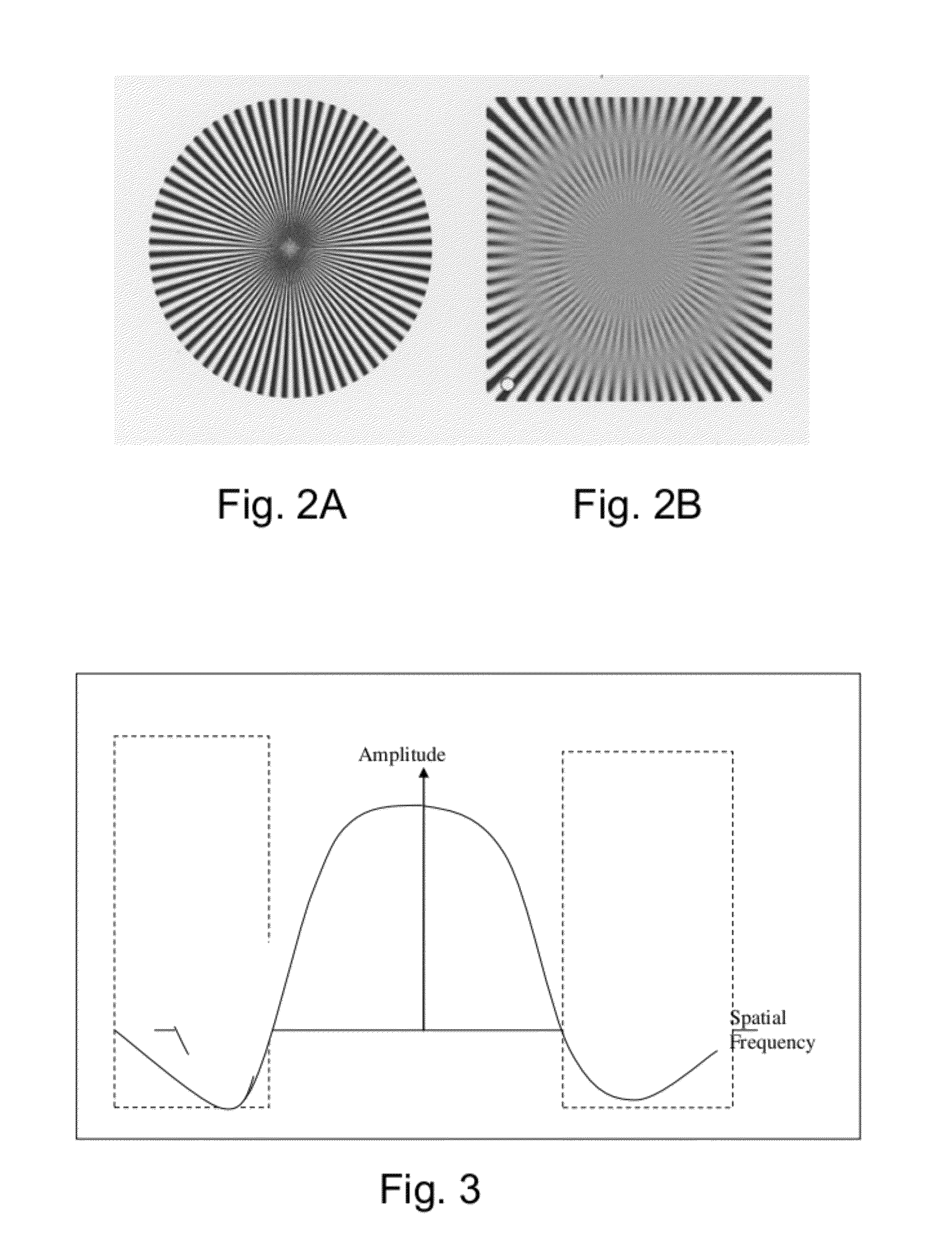Managing Models Representing Different Expected Distortions Associated with a Plurality of Data Captures
a data capture and model technology, applied in image enhancement, instruments, computing, etc., can solve problems such as the detection of a machine-readable code contained or represented in images, and achieve the effect of expanding decoding
- Summary
- Abstract
- Description
- Claims
- Application Information
AI Technical Summary
Benefits of technology
Problems solved by technology
Method used
Image
Examples
Embodiment Construction
[0027]When an image is distorted (e.g., blurred, out of focus, etc.) by an optical capture device (e.g., a cell phone camera, PDA, digital camera, etc.) the loss of information from a target image (FIG. 2A) can be in the form shown in FIG. 2B. For example, in some cases there may be a loss of information in some high spatial frequencies.
[0028]The distortion may result in some high spatial frequencies of the target image being “out of phase” or otherwise distorted.
[0029]In the case of a target image including or representing machine-readable information, e.g., a barcode, data glyph or digital watermark, some higher spatial frequency information corresponding to at least some of the machine-readable information is also out of phase, making reliable detection of the machine-readable information more difficult.
[0030]Distortion such as blurring can be modeled or approximated by a convolution of a target image with, e.g., a Bessel function, as postulated by J. I. Yellott et al., “Correcti...
PUM
 Login to View More
Login to View More Abstract
Description
Claims
Application Information
 Login to View More
Login to View More - R&D
- Intellectual Property
- Life Sciences
- Materials
- Tech Scout
- Unparalleled Data Quality
- Higher Quality Content
- 60% Fewer Hallucinations
Browse by: Latest US Patents, China's latest patents, Technical Efficacy Thesaurus, Application Domain, Technology Topic, Popular Technical Reports.
© 2025 PatSnap. All rights reserved.Legal|Privacy policy|Modern Slavery Act Transparency Statement|Sitemap|About US| Contact US: help@patsnap.com



